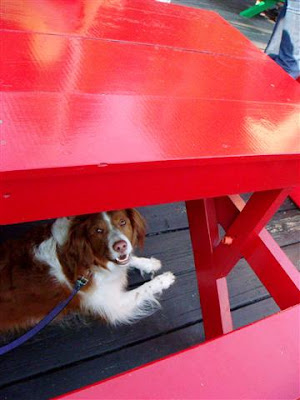In June, I wove the leftover warp and decided to make it into napkins.
In July, I finally hemmed them!!!
Time for me to go on at great length about hemming. I've had trouble perfecting my technique. Feel free to just look at pictures or skip this post all together! I'm just trying to record the things I've tried as I converge on my favorite hemming techniques.
Hems
I've had trouble perfecting my hemming technique.
My machine hems are somewhat crooked and wiggly, but they hold up great to everyday use and laundering.
My hand hems look beautiful, but are time-consuming. Plus, one of the huck towels that I hand-hemmed this winter, had problems with a bit of the hem coming loose within a few uses.
I want to move back toward machine hemming, but I want the hems to look good.
Cutting the ends of my cloth with a rotary cutter to square it up is easier and more accurate than using scissors.
Ways to secure the ends of the cloth:
- straight stitch
- zigzag stitch
- multi-stitch zigzag
- serging

I switched over to the multi-stitch zigzag disk. I've never used any of these mysterious disks before.

It didn't distort my fabric the way a normal zigzag stitch often does. I think it secures the threads in the fabric better than straight stitching because with a straight stitch not as many of the weft stitches are involved.

Regular zigzag on the left is puckering up a little. Multi-stitch zigzag on the right isn't as puckered. A few other tests are on this same scrap.

Here's my first multi-stitch zigzag on a scrap of the napkin fabric. Good thing it was a practice piece....I was all over the place!
I haven't tried serging yet because of the mixed reviews that weavers I know give their serged edges. Plus, I don't have a serger and don't really want to have to deal with another machine. I know some people swear by it though!
Ways to hold hems in place for sewing:
I am a convert to Steam a Seam for holding fiddly pieces together. I've got the napkin hems secured and folded over ready to sew the hem.
Ways to sew hem:
- straight stitch by machine
- stitch by hand
- straight stitch by machine with walking foot

When I straight stitch by machine, my hems don't come out as even and beautiful as I wish they would. Several people recommended that I try a walking foot for my machine. I bought a general purpose walking foot at Joann Fabrics so I could give it a try.

The walking foot replaces the regular foot on your sewing machine, and has a prong that fits around the screw that holds the needle in place. That prong makes the walking foot advance the top of the fabric, just like the mechanism of your sewing machine advances the bottom of the fabric.
While my hems aren't perfect with the walking foot, they are better. It's easier to get the cloth to behave when the top advances along with the bottom.
The jury is still out as far as I'm concerned with the best way for me to secure the rough ends of my cloth. But the combination of Steam a Seam and the walking foot seem like they'll be great for many sewing jobs, especially with handwoven fabric.
In Summary:
My preferred method for hemming something that will be used heavily and machine washed and dried is to:
- Multi-stitch zigzag to secure the fabric
- Hold hem in position with Steam-a-Seam
- Hem using a walking foot













































